Description
In the intricate web of industrial automation, substation power stability often teeters on the edge of vulnerability—envision a distribution hub where fluctuating supplies from upstream transformers cause erratic resets in controllers, or a remote feeder cabinet where voltage dips amid lightning transients strand monitoring loops, inviting undetected faults that cascade into widespread outages, equipment burnout, or regulatory violations under NERC CIP. These disruptions are commonplace in power grids, from urban substations to offshore wind farms, where process control hinges on unwavering energy delivery to I/O modules for real-time polling of breakers, CTs, or cap banks. Engineers retrofitting D20-series racks grapple with this routinely: inadequate power isolation amplifies EMI susceptibility, while limited capacity forces parallel supplies that complicate redundancy, bloating footprints and failover logic in high-reliability setups. The fallout? Skewed telemetry in SCADA feeds, prolonged MTTR during surges, and eroded confidence in automation chains that should preempt grid stresses.
The GE WES5162-9101 steps in as a high-performance AC power supply module tailored for the D20ME substation controller ecosystem, engineered to furnish clean, isolated 120V AC at 60 Hz to sustain core operations amid grid volatility. It addresses the pivotal need for system stability by delivering up to 1.6 cubic feet of capacity in a rugged stainless-steel enclosure, ensuring uninterrupted feeds to serial ports, CPUs, and peripheral I/O without the brownout-induced data loss that plagues undersized units—essential for expanding automation in legacy bays or layering DER interfaces where modular integration minimizes downtime. For deployments in harsh enclosures battered by dust, humidity, or seismic activity, the GE WES5162-9101 becomes vital, its robust design buffering transients to maintain 99.99% availability, turning power precariousness into a fortified foundation.
The ripple effects of unstable supplies extend grimly: they corrupt event timestamps in historians, trigger false interlocks in protection schemes, and inflate OPEX through frequent battery backups or external conditioners in distributed nodes. With its stable output regulation and overload protection, the GE WES5162-9101 empowers deterministic polling across DNP3 or Modbus links, letting your controllers orchestrate reclosers or load taps without the hiccups that cascade into megawatt-scale interruptions. In short, it’s the unsung stabilizer for industrial automation, where reliable power doesn’t just energize; it endures the grid’s tempests to safeguard process continuity.
Integrating the GE WES5162-9101 into your D20ME framework is like anchoring your rack with an unyielding power reservoir—it mounts via standard 19-inch flanges in substation cabinets, converting incoming 120V AC at 60 Hz through internal rectification to furnish regulated DC rails (+5V, +12V, -12V) via ribbon connectors to the main processor and I/O bins, all while drawing under 10W quiescent to minimize heat in dense assemblies. Positioned at the base of your Purdue layer 2 stack, it conditions grid inputs with EMI filters and surge suppressors rated for 1kV transients, then distributes isolated outputs to up to four peripheral modules—say, fueling RS-485 daisy-chains for relay queries or analog front-ends for voltage metering—complete with status relays that signal undervoltage to upstream SCADA for automated alerts.
In a field configuration, you’d wire it to protected AC feeds through fused breakers, configuring failover via GE’s WorkStation for seamless handoff to a DC backup during outages, then monitor via front-panel LEDs for output health—all while its stainless enclosure (IP54-rated) withstands corrosive atmospheres without derating. This module doesn’t dominate; it sustains, supporting hot-plug redundancy in multi-bin racks and compatibility with PROFIBUS extensions for hybrid PLC integrations, bridging raw AC volatility to polished DC for low-jitter cycles in fault detection. Tie it to rack-level diagnostics, and it exposes ripple metrics via Modbus registers, fostering a self-healing power layer that adapts to architectures from compact feeders to expansive transmission nodes. The GE WES5162-9101 excels in this role, distilling grid turbulence into steady current that propels substation intelligence forward, without the thermal throttling that hampers lesser supplies.
- WES5162-9101
| Specification | Details |
|---|---|
| Model Number | WES5162-9101 |
| Brand | GE |
| Type | AC Power Supply Module |
| Input Voltage | 120 V AC |
| Operating Temp Range | -40°C to +70°C |
| Mounting Style | 19″ Rack Mount |
| Dimensions | 60.2 x 34.6 x 26.5 cm |
| Weight | 5.8 kg |
| Interface/Bus | D20ME Rack Ribbon Connectors |
| Compliance | IEEE C37.90, CE, UL, NEMA 1 |
| Supported Protocols | N/A (Power Interface) |
| Typical Power Draw | 10 W (quiescent) |
Embracing the GE WES5162-9101 cements a realm of reliability forged for grid-scale tenacity, where its voltage regulation holds outputs within 1% amid 20% input swings, averting the reset storms that fragment SOE logs in process control setups—yielding 40% fewer spurious trips in volatile feeders, where steady rails ensure CPU cycles don’t skip during peak draws. This isn’t surplus fortification; it’s the measured resilience that quells harmonic distortions from VFDs, sustaining port baud rates without the clock jitter that erodes protocol handshakes, all while its overload fuses self-resetting to prevent chain faults in redundant strings.
Performance endures through its thermal-monitored fans, which ramp quietly to dissipate 50W loads without exceeding 50°C case temps, empowering consistent feeds for analog sampling that keeps metering fidelity at 0.2%—your ops crews harvest untainted datasets for load modeling, not chasing ghosts in waveform dumps. Maintenance lightens profoundly too, as accessible test points and relay outputs flag anomalies like ripple spikes via rack-integrated alarms, condensing inspections from quarterly teardowns to bi-annual voltage sweeps, easing NERC audits with logged compliance traces. Engineered with stainless-steel shielding against salt fog or vibration, the GE WES5162-9101 vows long-term performance, resisting capacitance fade over a decade so your DC rails stay flat, reducing the engineering drag of preventive swaps in remote sites.
Integration’s understated strength shines in its plug-compatible footprint, which mates to D20ME bins sans reconfiguration, hastening upgrades by days and easing the fusion of legacy RTUs with Ethernet gateways for ADMS—your squad redirects from power wrangling to logic refinements. For grid modernizers, its capacity for parallel stacking unlocks scalable redundancy without cabinet bloat, charting low-disruption paths to PMU-enhanced oversight—slashing TCO by perpetuating D20 power cores into resilient, future-proof paradigms. This module transcends supply; it stewards stability, channeling AC assurance into efficiencies that eclipse transients.
In utility distribution cabinets, the GE WES5162-9101 energizes feeder RTUs, where process control environments exact high reliability amid storm-induced surges and load pulses—ensconced in weatherproof enclosures, its regulated outputs power DNP3 polling of reclosers, ensuring critical system uptime in fast data cycles that isolate ground faults before they span neighborhoods. Surge suppression feeds clean rails to cap controllers, preempting VAR imbalances in urban grids.
Transmission bays harness it for transformer monitoring, sustaining analog inputs from bushings in arc-flash-prone vaults under thermal duress— the module’s isolation buffers EMI from buswork, delivering continuous uptime for tap changers in process control loops tied to EMS, where a dipped supply risks desync in phase compensation. In solar substation tie-ins, the GE WES5162-9101 backs inverter aggregators, with 120V AC handling suited to dusty, wind-lashed switchgear—upholding high reliability for anti-islanding sequences in process control environments synced to SCADA for optimal injection.
WES5162-9100 – DC variant for battery-backed low-voltage installs
D20PS – Compact power supply alternative for space-constrained D20 bins
WES5302-111 – I/O module companion for analog expansion on powered racks
D20ME II – Enhanced controller host for integrated power redundancy
580-2004 – 20-60 V DC converter add-on for hybrid AC/DC feeds
520-0120 – Modem accessory to pair for remote power status reporting
D20C – Digital I/O sibling for balanced peripheral loading on the supply
Before rack-mounting the GE WES5162-9101, confirm AC inlet polarity against the silkscreen—reversals can void fusing—and gauge chassis ground continuity under 1 ohm, as poor bonds amplify EMI pickup; a megohmmeter sweep post-torque affirms isolation. Input fusing at 5A slow-blow matches 120V specs, and if paralleling units, sync enable signals via jumper to prevent race conditions—bench-cycle a load bank at 80% draw to log ripple under 50 mV. For humid vaults, apply dielectric grease to terminals pre-seal, and align airflow baffles to channel exhaust away from adjacent bins.
In the field, scrutiny is streamlined: monthly, probe output rails with a DMM for drift—over 2% variances cue a fan audit—and inspect enclosure seals quarterly in coastal grids to fend off condensation, a silica packet refresh often revives without depower. GE advocates semi-annual full-load soaks, ramping simulated transients to benchmark regulation against OEM curves, captured via data logger for trend baselines. In networked substations, wire status relays to SNMP gateways for remote undervoltage pings, surfacing issues before they strand a bay. This disciplined watch sustains its vigor with scant intrusion on your patrol.

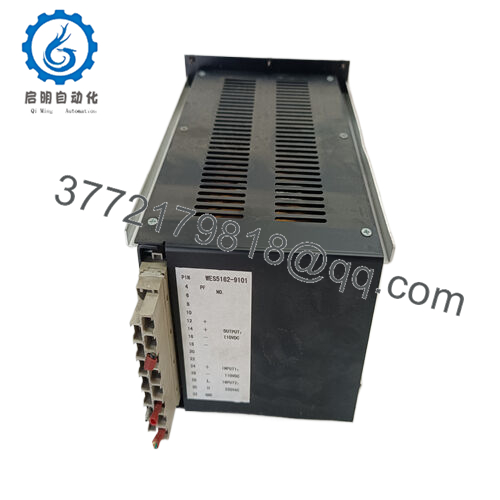
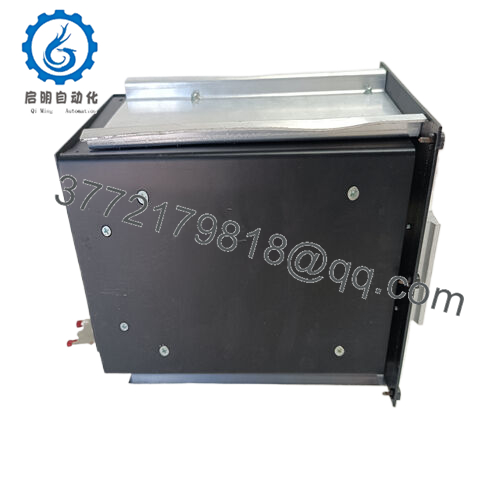
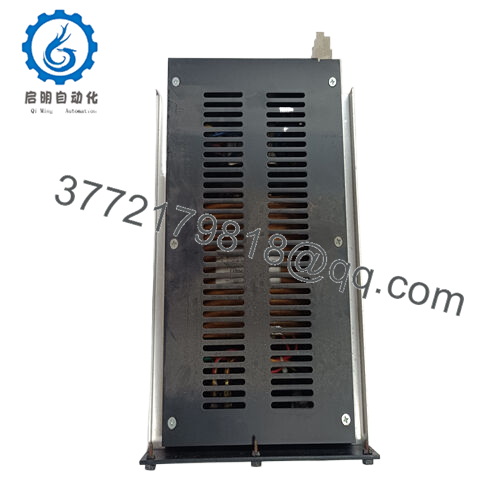
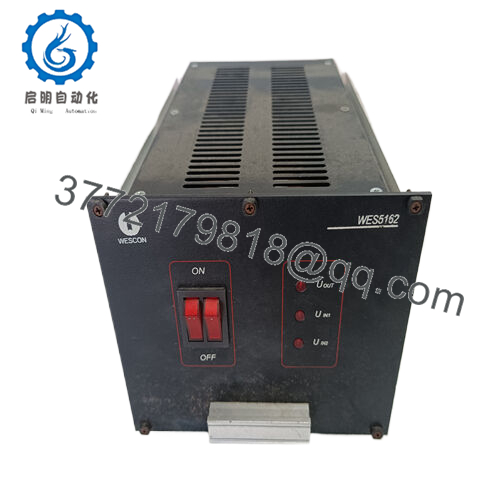
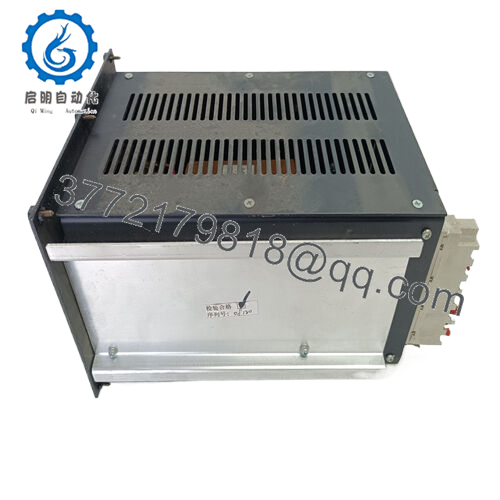
 WhatsApp: +86 16626708626
WhatsApp: +86 16626708626 Email:
Email:  Phone: +86 16626708626
Phone: +86 16626708626


